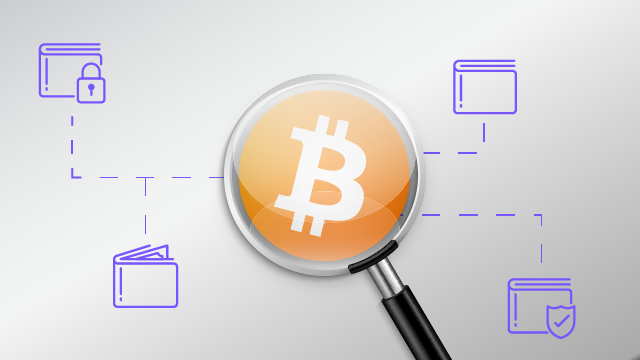
In the fast-paced and often enigmatic world of cryptocurrency, Bitcoin ATMs have emerged as both a symbol of Bitcoin’s growing accessibility and a subject of security debates. As we delve into the safety of these machines, reminiscent of Neil Patel’s analytical approach to digital marketing, it’s crucial to dissect the layers of security and risks involved in using Bitcoin ATMs.
The Growing Footprint of Bitcoin ATMs
Bitcoin ATMs, allowing users to buy or sell Bitcoin in exchange for fiat currency, are proliferating worldwide. Their increasing presence marks a significant milestone in the journey of Bitcoin from an obscure digital currency to a more mainstream financial asset. However, as they bridge the gap between the digital and physical realms, questions about their security are inevitable.
Physical Security: The First Layer of Protection
Physical security is a fundamental aspect of Bitcoin ATMs. Typically, these machines are installed in locations with high foot traffic, often within established businesses that have their own security systems. They are designed to be sturdy, tamper-resistant, and are frequently equipped with surveillance cameras. This physical setup plays a crucial role in deterring theft and vandalism.
Digital Security Measures
The digital security of Bitcoin ATMs is equally significant. These machines employ advanced encryption technology to protect the sensitive data of users. From the moment you initiate a transaction, your information is encrypted, akin to the protocols used in online banking and e-commerce platforms, ensuring the confidentiality and integrity of your transactions.
User Verification: A Key Security Feature
In line with global financial regulations, Bitcoin ATMs incorporate user verification processes. This could involve SMS verification for smaller transactions or ID verification for larger amounts. This step is critical in preventing identity theft and fraud, ensuring that the person engaging in the transaction is indeed who they claim to be.
Network Security: Ensuring Safe Connections
Bitcoin ATMs require a secure network connection to process transactions. Operators generally use encrypted connections to protect against potential cyber threats. This network security is a crucial component in safeguarding transaction data from interception or hacking.
Software Integrity and Regular Updates
The software running on Bitcoin ATMs is a vital aspect of their overall security. Regular software updates and maintenance are essential to protect against emerging cyber threats and ensure smooth operation. Operators who diligently maintain and update their machines’ software significantly enhance the security of transactions.
Regulatory Compliance and AML/KYC Norms
Regulatory compliance is another layer of security for Bitcoin ATMs. Operators must adhere to Anti-Money Laundering (AML) and Know Your Customer (KYC) regulations. These standards necessitate stringent security measures and user verification processes, which add to the trustworthiness and safety of Bitcoin ATM transactions.
Blockchain: The Underlying Security Backbone
The inherent security features of the blockchain technology, which underpins Bitcoin, also contribute to the safety of Bitcoin ATMs. Blockchain’s decentralized nature and the immutable record of transactions provide transparency and traceability, significantly reducing the risk of fraudulent activities.
The Role of Users in Ensuring Transaction Safety
While Bitcoin ATMs are equipped with numerous security features, the user’s role in ensuring transaction safety cannot be overstated. Protecting personal information, being vigilant while transacting, and understanding the workings of Bitcoin are crucial for a secure transaction experience.
Transaction Limits and Monitoring
Transaction limits are often placed on Bitcoin ATM transactions as a security measure. Additionally, operators actively monitor transactions for any suspicious activity, adding an extra layer of security to prevent illicit usage of the machines.
Educating Users: Enhancing Security Through Awareness
A significant component of Bitcoin ATM security is user education. Operators and manufacturers often provide instructions and guidelines for safely using these machines. An informed user is better equipped to navigate the complexities of Bitcoin transactions and avoid common pitfalls.
Addressing the Safety Debate
In addressing the safety debate surrounding Bitcoin ATMs, it’s clear that these machines have robust security protocols in place. However, the level of safety also depends on factors such as the location of the ATM, the diligence of the operator in maintaining the machine, and the awareness and actions of the users.
Conclusion: A Balanced Perspective on Bitcoin ATM Safety
In conclusion, Bitcoin ATMs offer a convenient and increasingly secure way to transact in Bitcoin. The multifaceted security measures in place, from physical safeguards to sophisticated digital encryption and regulatory compliance, provide users with a safe environment for their transactions. However, users also play a critical role in maintaining this security. By staying informed, vigilant, and cautious, users can confidently utilize Bitcoin ATMs, making the most of their convenience while upholding the safety of their transactions.
As the world of cryptocurrency continues to evolve, so too will the security features of Bitcoin ATMs, ensuring they remain a reliable option for users in the ever-expanding Bitcoin market. Understanding and leveraging these security features are key to confidently and safely navigating the world of Bitcoin ATMs.


